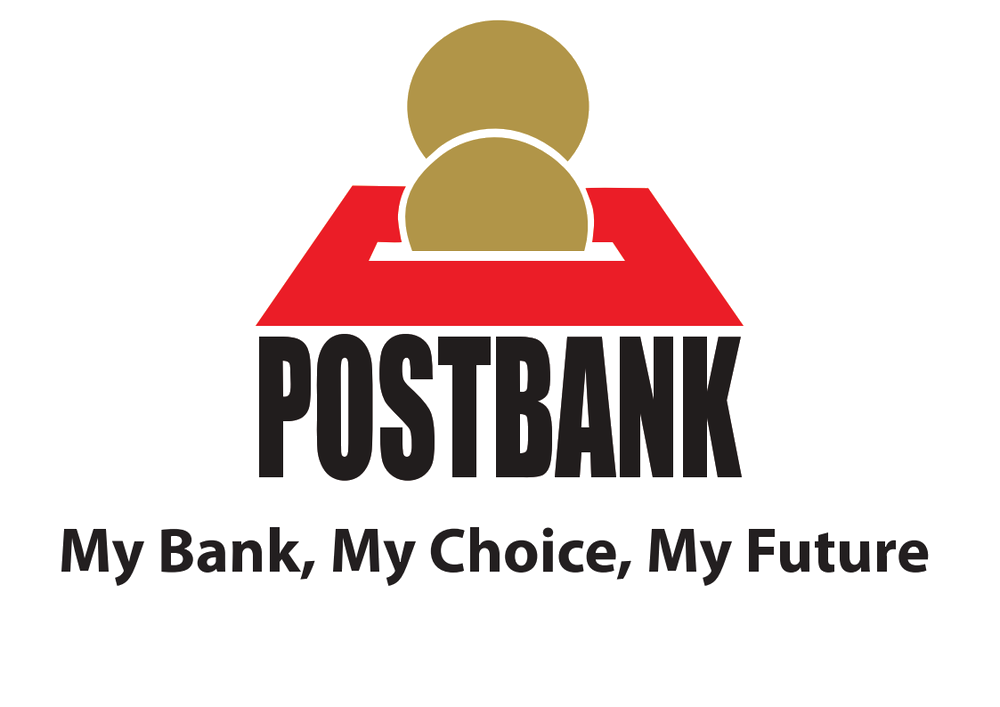Scale2Save case study: innovative business models
Scale2Save Campaign
Micro savings, maximum impact.
Explores innovative business models and partnerships for financial service providers to effectively access the mass market of low-income customers. Part of Scale2Save's annual State of Savings and Retail Banking in Africa research series.
BRUSSELS, 20 May 2021 – ‘A case study on innovative business models: partnerships as a key to unlocking the mass market’, launched today in partnership with FinMark Trust, is the third of the Scale2Save series on the State of Savings and Retail Banking in Africa.
This study contributes to answering some of the Scale2Save learning programme research questions. Particularly, it sheds light on what constitutes a viable business model for small scale savings. The objective of this series is to inform retail banks and other financial service providers (FSPs) about developments in the industry affecting services to low-income customers.
Scale2Save is a partnership between the World Savings and Retail Banking Institute and the Mastercard Foundation. Its goal is to establish the viability of low-balance savings accounts and to understand the extent to which savings allow vulnerable people to boost their financial resilience and wellbeing.
About this study
Financial services in Africa still have great potential for expansion, particularly in the low-cost market, which remains under-served.
Financial service providers (FSPs) who serve low-income customers face a threefold challenge. Digitization is becoming the norm, both within the financial services industry and in the fast-emerging FinTech sector. They wrestle with the effects of the COVID-19 pandemic and its impact on their customers. And they must simultaneously adapt to changing and more demanding customer expectations. These FSPs are under pressure. How they should adapt to these new, unfolding realities?
New and varied business models are emerging from efforts to address these issues. These models range from cooperation with other FSPs to the use of digitization and FinTech, to tackling addressing infrastructure shortcomings and addressing customer expectations.
This study describes six models, linking each to case studies:
- Cooperate with other FSPs– FSPs can compensate for their lack of physical infrastructure by partnering with service providers who have a more extensive network to offer their products. Similarly, FSPs with a limited range of products – often prescribed by regulatory or legal considerations – can enhance their value proposition to customers by incorporating products from other FSPs. These models are beneficial to both parties, because the overall business volume will exceed their individual efforts.
- Cooperate to build and extend financial infrastructure– Despite progress in the past decade, the financial infrastructure in many African countries is still inadequate for the needs of savings-led FSPs. FSPs can work together to tackle these shortcomings, especially in retail payments and credit information systems. Cooperation can be either directly with other FSPs to improve infrastructure or through engagement with financial regulators to establish what the FSPs need to serve customers better.
- Cooperate with mobile money operators– Mobile money operators (MMOs) are the dominant retail financial service providers in some African countries. This strong market position, combined with the reach of mobile money agents, makes these FSPs attractive partners for banks, enabling them to offer banking services to mobile phone customers. These partnerships are also attractive to MMOs, enabling them to generate additional revenue and enhance their appeal to customers by offering banking services without the challenges of seeking a banking licence.
- Use FinTech– Innovation in retail financial services is often achieved by independent technology-based companies or FinTech. These companies develop ways of providing financial services digitally, but typically lack direct access to customers. By working together, savings-led FSPs can incorporate the services into their value proposition without having to acquire or develop the internal capacity necessary. FinTech services span a wide range of financial capabilities, from client-onboarding, payments and savings and investments to credit and credit-assessment services.
- Establish a purely digital FSP– FSPs with strong digital capabilities or commitment can establish a purely digital bank, with no branch network and all client services and interactions done digitally. This may be simpler than trying to digitize an existing operation but is resource-intensive.
- Cooperate with non-financial service providers– Increasingly, FSPs need to link directly into the economic ecosystem in which they operate. They must enable customers to obtain goods and services where required, and provide the financial service embedded in that interaction. This can take various forms, from the digitization of value chains across all actors (for example in agriculture), to incorporating the FSP’s products in the services of a non-financial service provider (such as remittances sent or received at grocery stores).
In each case we identify the key points that FSPs should take into account when considering a particular model, and give an example of the model, identifying the success factors and hurdles to be overcome.
The study concludes by summarising the strategic questions that FSPs should answer when looking at alternative business models. We provide a decision tree that FSPs can use to guide them in selecting an alternative business model best suited to their situation and environment.
Other studies in this series will address specific approaches to some of these models.
Downloads
Download case studies, in both English and French, to find out more about our Scale2Save research series.
Scale2Save
13/10/2023
Savings and Retail Banking in Africa 2022 WSBI survey of Financial Inclusion for micro, small and medium-sized enterprises (MSMEs)
The Savings and Retail Banking in Africa report aims to help improve access to financial services for financially
25/09/2023
WSBI as a catalyst for unlocking the potential of female entrepreneurs
13 October 2023, 9.30am-12pm Hôtel Du Golf Rotana Palmeraie, Marrakech I Morocco
18/09/2023
WSBI’s MD Peter Simon opens the G20 side event panel “Gender equity and SME financing in a digital landscape” at the SME Finance Forum in Mumbai
The World Savings Bank Institute (WSBI-ESBG), with the substantial support of its Indian member, the State Bank of India
01/03/2023
The State of Savings and Retail Banking in Africa
The WSBI has conducted two research reports tracking the progress of retail and savings banks in their financial inclusion efforts across Africa (2018, 2019).
22/02/2023
Driving Formal Savings: What Works for Low-Income Women?
While financial inclusion is expanding globally, the gender gap in access to financial services and products persists
19/12/2022
What a journey it has been!
Between 2016 and 2022 Scale2Save financially included more than 1.3 million women, young people and farmers in Kenya, Uganda, Nigeria, Morocco, Senegal and
14/12/2022
The financial diaries revealed useful insights into young people’s savings, spending and income behavior
It examines their experience in respect to financial inclusion, support structures and opportunities for young entrepreneurs
09/12/2022
The Power of Community-Based Organizations to Mobilize Farmers’ Savings
In Ivory Coast, the world’s largest cocoa producer, cocoa is harvested twice a year, in May-June and in October-December. Between seasons, most smallholder farmers do not generate revenue
15/11/2022
How Can Small Scale Savings Be Offered Sustainably?
Learnings from the Scale2Save Program on successful business and institutional models
15/11/2022
Application of CGAP Customer Outcomes Framework in Uganda
This case study by WSBI's Scale2Save programme applied the CGAP customer outcome indicator framework to test the impact of a new basic savings product positioned in the financial inclusion market and…
ESBG welcomes EU Commission's anti-money laundering Package
BRUSSELS, 20 July 2021 – The European Savings and Retail Banking Group (ESBG) welcomes the ambitious AML-CFT package announced today by the European Commission. The ESBG is hopeful that the proposal will strengthen the fight against financial crime and calls for a clear regulation and efficient responsibility sharing between the new EU authority and the national ones.
“The consistent and integrated EU-wide supervision and the risk-based approach of the new AML-CFT regulation are steps in the right direction”, said Joseph Delhaye, Chair of ESBG’s Legal and Retail Committee.
“ESBG members are fully committed to continue fighting money laundering and believe that a clear and practical regulation will be key to make these efforts most effective”, he added.
The proposal for an EU-wide anti-money laundering authority, also part of the package, would be an extraordinary opportunity to ensure consistent supervisory practices and a comprehensive view of current and emerging risks. Nevertheless, overlaps with national authorities must be avoided and centralisation should not come at the cost of efficiency.
“ESBG fully supports harmonised guidance, better coordinated implementation and unified supervisory practices on AML-CFT across the EU”, said WSBI-ESBG Managing Director, Peter Simon.
ESBG is looking forward to strengthening the cooperation between supervisors, national Financial Intelligence Units and the private sector on AML-CFT. Particularly, ESBG members would truly value more feedback from authorities and supervisors regarding reporting activities. Close cooperation among all stakeholders is needed to jointly succeed in the fight against money laundering.
Press contact
Leticia Lozano, Senior Communications Advisor
leticia.lozano@wsbi-esbg.org
+32 476420953
About ESBG: The European Savings Banking Group (ESBG) has 23 members in 18 countries. As some of its members are national organisations, ESBG represents the interests of over 800 banks working responsibly and closely with their communities and SMEs. Together, ESBG members manage assets worth €5,700 billion, serve 162 million Europeans and employ nearly 660,000 people. ESBG is the regional arm of the WSBI. Both organisations are headquartered in Brussels.
Download
related
European Banking Authority (EBA) on ESG risk management
The European Savings and Retail Banking Group (ESBG) submitted its response to the consultation launched by the European Banking Authority (EBA). ESBG insists on the need for consitency with CSRD and CSDDD, the addressees of this guideline should also
ESBG advocates for increased clarity and streamlining of supervisory reporting requirements
On 14 March, ESBG submitted its response to the European Banking Authority (EBA) consultation on ITS amending Commission Implementation Regulation (EU) 2021/451 regarding supervisory reporting
WSBI-ESBG advocates for robust implementation of the BCBS Pillar 3 framework for climate-related financial risks
On 14 March, WSBI-ESBG submitted its response to the Basel Committee on Banking Supervision (BCBS) consultation on its Pillar 3 disclosure framework for climate-related financial risks
ESBG stresses the need for consistency and clarity in its Response to the SFDR Review Consultation
ESBG submitted its response to the European Commission’s consultation on the SFDR review, aiming to enhance transparency in sustainability-related disclosures within the financial services sector
ESBG response to the EBA’s consultation on Guidelines on preventing the abuse of funds and certain crypto-assets transfers for ML/TF
The guidelines on the “travel rule” delineate the actions that Payment Service Providers (PSPs), Intermediary PSPs
ESBG’s response to the Commission’s consultation on the GDPR
The primary EU legislation ensuring the fundamental right to data protection is the General Data Protection Regulation
Joint statement calling for clear distinction between AI and credit scoring in AI Act
On 11 January 2024, a joint industry statement was issued by ESBG, together with the Association of Consumer Credit Information Suppliers (ACCIS)
Social Partners call for Parliamentary support in review of the Sectoral Social Dialogue Framework
On 26 May, 35 European Social Partners from a wide range of sectors requested support from the European Parliament in the review
ESBG responds to the Commission’s consultation on its Taxonomy Environmental Delegated Act
On 3 May, ESBG responded to the Commission’s consultation on its new set of EU taxonomy criteria for economic activities that
ESBG revises its position paper on the CSDDD in accordance with the recent negotiations
Given the developments of the recent political negotiations, ESBG has decided to update its position paper on the Corporate Sustainability Due Diligence Directive (CSDDD)
Assessment of SMEs’ Post-COVID Financial Health
Small and medium sized businesses (SMEs) have been hard hit by the ongoing COVID pandemic. This is especially the case in high employment sectors, such as tourism, hospitality, and leisure.
National governments and the EU have stepped in with unparalleled levels of support to help struggling SMEs[1]. Banks have put in place a variety of solutions to help their clients, both in cooperation with and as a complement to public authorities’ measures. Guarantee institutions have also played a key role in supporting corporate lending dynamics by setting up extensive support measures[2]. In addition, accountants have helped SMEs adjust to the COVID circumstances based on their skills and capabilities around financial distress and business planning.
On top of their individual efforts, these sectors have also worked together at national and EU levels. In some cases, this has already led to initiatives aiming to reduce uncertainties and difficulties for SMEs. We also acknowledge the impact of the Roundtables organised by the European Commission in reinforcing these cooperative efforts and laud the efforts of national partners who have reached out to other sectors.
Altogether, these measures have probably helped to prevent thousands of bankruptcies and insolvencies, as pointed out by Bruegel; however, in some cases, they may have also deferred solvency problems into the future.
Accountancy Europe, the European Association of Co-operative Banks (EACB), the European Association of Guarantee Institutions (AECM), the European Banking Federation (EBF), the European Savings and Retail Banking Group, SMEunited and the five supporting organisations of this joint statement believe that it is time to start preparing for that future now!
Our organisations concur that SMEs, accountants, financial and guarantee institutions, and other key actors in the SME ecosystem need to get together to discuss SMEs’ overall post-COVID business outlook. Therefore, we announce the following:
- We will organise pan-European discussions involving our sectors and the relevant public authorities at the EU level in order to ensure a common understanding of the challenges and solutions.
- We will support initiatives by our national members when and where they deem it useful to organise cross-sectoral national meetings, reflecting country specificities and needs.
What would these discussions consist of?
Bottom-up, cross-sectoral voluntary discussions at the level of the national markets could be useful in leading to a common understanding among the participating stakeholders on the up-to-date situation of SMEs, which is vital for the effective monitoring and assessment of companies’ financial health and prospects.
The signatories will support possible new or continued national discussions around these issues by providing relevant analyses and promote an exchange of best practices that could serve as an inspiration for these discussions[3].
We also emphasise the overall need to foster the green and digital transition of the economy, as well as reporting and data sharing systems to meet changing business and market demands. Digitalisation can enable a better and more secure data exchange and provide more valuable insights through forward looking data and big data analytics. This will support the objectives of the twin transition of the EU economy.
Finally, in these discussions, there are two important balances to strike:
- While addressing what is different or unique about this crisis, we should also not overlook our best standard tool in getting out of a crisis: financiers working in a competitive market who use hard and soft data available to them about the creditworthiness of the borrowers. The market-based, time-tested risk assessment mechanisms should be allowed to function.
- While there is diversity in starting positions, impact of the crisis, structure of economies and characteristics of restructuring and insolvency frameworks, there is also a strong EU interest in ensuring consistency and synergies across national approaches. This means striking the right balance that gives an EU-wide steer to discussions that reflect national priorities.
Why is viability assessment important?
National dialogues to improve the availability of data and the assessment of viability can enable a better monitoring of businesses’ post-COVID health, and therefore:
- Help develop a sectoral view of SME debtors at a particular risk of financial problems post-COVID;
- Help governments better target any additional post-COVID measures, such as national measures (such as tax forbearance measures) or the EU Recovery Fund allocations toward uses that can make the most difference, i.e., in support of businesses and sectors most in need and which have the best chances of contributing to a sustainable recovery[4];
- Facilitate debt and loan restructuring for viable borrowers; and
- Help identify what additional measures are needed to help “near-viable” SMEs survive post-COVID, i.e., businesses that would otherwise be healthy were it not for (for example) the debt overhang caused by COVID, which might still need additional temporary help to prevent them from going out of business.
In this context we note the recent paper of the ESRB focusing on preventing and managing a (potentially) large number of insolvencies. In particular, we agree with the following observations:
- ‘The rise in insolvencies that normally accompanies a contraction in economic activity has so far not materialised, but a major wave of insolvencies may yet happen if crisis management measures are withdrawn too quickly.’
- As we enter the post-COVID phase, the goal should be to avoid insolvencies of fundamentally viable firms and to deal with insolvencies of fundamentally unviable firms efficiently. This phase will require ‘a transition from broad-based, system-wide measures to a more targeted approach’.
- ‘Policies must be geared towards rebuilding the economy, fostering adaptation to structural change, rather than trying to preserve, or return to, the pre-pandemic economy.’
- Strategies to address solvency issues should include, where needed, ‘improved restructuring frameworks and debt relief or equity injections to repair balance sheets of corporates with viable business models.’
- Slow or overly complex restructuring proceedings ‘could damage in particular SMEs.’
- For companies found to be ‘unviable in the post-COVID-19 economy, efficient insolvency procedures should be developed to facilitate the swift redeployment of resources to more efficient uses.’
- A key challenge will be distinguishing between viable and non-viable firms, which cannot realistically be performed on the required massive scale by public administrations or courts. The information and expertise held by informed lenders, such as banks, and by guarantee institutions[5], will be critical for the survival of viable companies. In our view, the better/earlier the information provided by SMEs/accountants, the easier it is for the banks and guarantee institutions to evaluate.A clear implication of this report and the broader discussion is the need for pan-European and national cooperation among companies, lenders, guarantee institutions, the public sector, and providers of financial services. As a first step, public authorities, accountants, financial institutions, guarantee institutions, and SMEs themselves should join efforts in the assessment of the post-COVID solvency and prospects of SMEs. This would in turn support the design of more targeted and effective follow-up COVID aid measures, as well as a progressive transition to a stable, green, and digital economy.
[1] Including furlough schemes, tax deferrals, government-backed loans and guarantees, and loan moratoria. Many European countries have even temporarily suspended the enforcement of insolvency laws.
[2] cf. https://www.flipsnack.com/AECMeurope/aecm-covid-brochure/full-view.html
[3] We do not seek to be prescriptive or comprehensive. It should be up to our national members to decide to hold such discussions and what issues should be discussed.
[4] By which we mean ‘sustainability’ in its more comprehensive sense i.e. environmental, financial and economic, societal etc.
Download
related
European Banking Authority (EBA) on ESG risk management
The European Savings and Retail Banking Group (ESBG) submitted its response to the consultation launched by the European Banking Authority (EBA). ESBG insists on the need for consitency with CSRD and CSDDD, the addressees of this guideline should also
Enhancing Transparency in Bank Disclosures: ESBG delivers comprehensive response to the EBA’s Pillar 3 data hub consultation
On 14 December 2023, the European Banking Authority (EBA) published a discussion paper on the Pillar 3 data hub processes and its possible practical implications.
IASB Exposure Draft (ED) on Financial Instruments with Characteristics of Equity
On 29 November 2023, the International Accounting Standards Board (IASB) proposed amendments in an Exposure Draft to tackle challenges in financial reporting for instruments with both
ESBG’s response to the EFRAG Comment Letter on Financial Instruments with Characteristics of Equity
On 29 November 2023, the International Accounting Standards Board (IASB) proposed amendments in an Exposure Draft to tackle
ESBG advocates for increased clarity and streamlining of supervisory reporting requirements
On 14 March, ESBG submitted its response to the European Banking Authority (EBA) consultation on ITS amending Commission Implementation Regulation (EU) 2021/451 regarding supervisory reporting
WSBI-ESBG advocates for robust implementation of the BCBS Pillar 3 framework for climate-related financial risks
On 14 March, WSBI-ESBG submitted its response to the Basel Committee on Banking Supervision (BCBS) consultation on its Pillar 3 disclosure framework for climate-related financial risks
ESBG stresses the need for consistency and clarity in its Response to the SFDR Review Consultation
ESBG submitted its response to the European Commission’s consultation on the SFDR review, aiming to enhance transparency in sustainability-related disclosures within the financial services sector
ESBG response to the EBA’s consultation on Guidelines on preventing the abuse of funds and certain crypto-assets transfers for ML/TF
The guidelines on the “travel rule” delineate the actions that Payment Service Providers (PSPs), Intermediary PSPs
ESBG responds to the SRB consultation on the future MREL policy
The European Savings and Retail Banking Group (ESBG) submitted its response to the consultation launched by the Single Resolution Board (SRB) in December 2023 on the future of the Minimum Requirement for own funds
ESBG’s response to the Commission’s consultation on the GDPR
The primary EU legislation ensuring the fundamental right to data protection is the General Data Protection Regulation
ECB and ESBG committed to a successful Digital Euro
BRUSSELS, 15 July 2021 – ESBG welcomes the decision of the Governing Council of the European Central Bank (ECB) to launch the investigation phase of the digital euro project as announced by the Eurosystem. The investigation phase will last 24 months and will aim at addressing key issues concerning design and distribution.
“ESBG and its members welcome the Eurosystem’s announcement and look forward to the coming interaction with the ECB”, said Sofia Lindh Possne, Chair of the ESBG Task Force on Central Bank Digital Currencies and Swedbank’s Senior Advisor Group Regulatory Affairs.
ESBG supports the ECB’s aim to ensure that in the digital age citizens and firms continue to have access to the safest form of money, central bank money. ESBG and its Members also support the efforts towards an environmentally friendly design of the core infrastructure of a future digital euro.
ESBG especially welcomes the involvement of different stakeholders via the creation of the Market Advisory Group. ESBG stands ready to engage with the Eurosystem and the other European Institutions during this investigation phase. In anticipation thereof, ESBG already drafted and issued a high-level position paper on the key challenges that the digital euro will face. The paper, published here, also suggests four possible use cases that could especially benefit from the issuance of a digital euro.
ESBG hopes this is a good starting base for a fruitful dialogue in the months to come and is looking forward to a further engagement on this important file with the ECB.
Notes to the editor
ESBG’s high-level position paper on a digital euro is available for download below in full and in summary format. It analyses five challenges for the issuance of a digital euro and presents four possible use cases that could especially benefit from the issuance of a digital euro.
Press contact
Leticia Lozano, Senior Communications Advisor
leticia.lozano@wsbi-esbg.org
+32 476420953
related
European Banking Authority (EBA) on ESG risk management
The European Savings and Retail Banking Group (ESBG) submitted its response to the consultation launched by the European Banking Authority (EBA). ESBG insists on the need for consitency with CSRD and CSDDD, the addressees of this guideline should also
Enhancing Transparency in Bank Disclosures: ESBG delivers comprehensive response to the EBA’s Pillar 3 data hub consultation
On 14 December 2023, the European Banking Authority (EBA) published a discussion paper on the Pillar 3 data hub processes and its possible practical implications.
IASB Exposure Draft (ED) on Financial Instruments with Characteristics of Equity
On 29 November 2023, the International Accounting Standards Board (IASB) proposed amendments in an Exposure Draft to tackle challenges in financial reporting for instruments with both
ESBG’s response to the EFRAG Comment Letter on Financial Instruments with Characteristics of Equity
On 29 November 2023, the International Accounting Standards Board (IASB) proposed amendments in an Exposure Draft to tackle
ESBG advocates for increased clarity and streamlining of supervisory reporting requirements
On 14 March, ESBG submitted its response to the European Banking Authority (EBA) consultation on ITS amending Commission Implementation Regulation (EU) 2021/451 regarding supervisory reporting
WSBI-ESBG advocates for robust implementation of the BCBS Pillar 3 framework for climate-related financial risks
On 14 March, WSBI-ESBG submitted its response to the Basel Committee on Banking Supervision (BCBS) consultation on its Pillar 3 disclosure framework for climate-related financial risks
ESBG stresses the need for consistency and clarity in its Response to the SFDR Review Consultation
ESBG submitted its response to the European Commission’s consultation on the SFDR review, aiming to enhance transparency in sustainability-related disclosures within the financial services sector
ESBG response to the EBA’s consultation on Guidelines on preventing the abuse of funds and certain crypto-assets transfers for ML/TF
The guidelines on the “travel rule” delineate the actions that Payment Service Providers (PSPs), Intermediary PSPs
ESBG responds to the SRB consultation on the future MREL policy
The European Savings and Retail Banking Group (ESBG) submitted its response to the consultation launched by the Single Resolution Board (SRB) in December 2023 on the future of the Minimum Requirement for own funds
ESBG’s response to the Commission’s consultation on the GDPR
The primary EU legislation ensuring the fundamental right to data protection is the General Data Protection Regulation
ESBG supports efforts to increase uptake of instant payments
BRUSSELS, 6 July 2021 – ESBG submitted its response to the European Commission’s (EC) public consultation on Instant Payments on 23 June. The association representing over 800 savings and retail banks fully supports efforts to increase the uptake of instant payments and shares the view that SCT Inst scheme could facilitate stronger and more integrated homegrown pan-EU payment solutions.
ESBG invited the EC to foster an environment that enables the uptake of instant payments, inter alia by favouring market-led developments and limiting any eventual action to the building blocks needed for widespread adoption of SCT Inst and the resolution of any hindering factors.
ESBG and its members are of the view that SCT Inst should be considered the basis of new pan-European payment solutions and further offers. Especially in the corporate segment, instant payments have huge potential in terms of new business models that could attract new clients. In particular, there is growing interest for the combination of SCT Inst with other payment schemes (e.g., Request To Pay), which can result in innovative use cases for instant payments. Any further action taken by the Commission should duly consider the differences that exist between retail and corporate segments and the potential unintended consequences of any new intervention.
related
European Banking Authority (EBA) on ESG risk management
The European Savings and Retail Banking Group (ESBG) submitted its response to the consultation launched by the European Banking Authority (EBA). ESBG insists on the need for consitency with CSRD and CSDDD, the addressees of this guideline should also
ESBG advocates for increased clarity and streamlining of supervisory reporting requirements
On 14 March, ESBG submitted its response to the European Banking Authority (EBA) consultation on ITS amending Commission Implementation Regulation (EU) 2021/451 regarding supervisory reporting
WSBI-ESBG advocates for robust implementation of the BCBS Pillar 3 framework for climate-related financial risks
On 14 March, WSBI-ESBG submitted its response to the Basel Committee on Banking Supervision (BCBS) consultation on its Pillar 3 disclosure framework for climate-related financial risks
ESBG stresses the need for consistency and clarity in its Response to the SFDR Review Consultation
ESBG submitted its response to the European Commission’s consultation on the SFDR review, aiming to enhance transparency in sustainability-related disclosures within the financial services sector
ESBG’s response to the Commission’s consultation on the GDPR
The primary EU legislation ensuring the fundamental right to data protection is the General Data Protection Regulation
Joint statement calling for clear distinction between AI and credit scoring in AI Act
On 11 January 2024, a joint industry statement was issued by ESBG, together with the Association of Consumer Credit Information Suppliers (ACCIS)
Social Partners call for Parliamentary support in review of the Sectoral Social Dialogue Framework
On 26 May, 35 European Social Partners from a wide range of sectors requested support from the European Parliament in the review
ESBG responds to the Commission’s consultation on its Taxonomy Environmental Delegated Act
On 3 May, ESBG responded to the Commission’s consultation on its new set of EU taxonomy criteria for economic activities that
ESBG revises its position paper on the CSDDD in accordance with the recent negotiations
Given the developments of the recent political negotiations, ESBG has decided to update its position paper on the Corporate Sustainability Due Diligence Directive (CSDDD)
A Digital Euro: what does it mean for savings and retail banks?
Since its inception, ESBG has been taking an active role in Digital Euro-related discussions and overall, ESBG welcomes
ESBG analyses digital euro’s main challenges
BRUSSELS, 6 July 2021 – Since the publication of the report on a digital euro in October 2020, ESBG and its members have been following closely and with great interest the developments made by the European Central Bank (ECB) in the project of a digital euro.
In this context, ESBG has recently finalised a high-level paper that analyses some of the main challenges that a digital euro will face. The paper touches upon five main topics: First, it describes the bank funding model and the challenges and risks that the introduction of a digital euro could bring about. Second, it discusses the topic of limits to individual holdings and finds that any envisaged limit should be based on a sound assessment of available data. Third, it focuses on the impact that a digital euro would have on intermediation and competition. Fourth, it describes the point of view of the customers. Fifth, it examines cross-border payments.
Finally, in suggesting four possible use cases that could especially benefit from the issuance of a digital euro, ESBG and its members stand ready to further engage with the ECB on the possible issuance of a digital euro.
Download
related
European Banking Authority (EBA) on ESG risk management
The European Savings and Retail Banking Group (ESBG) submitted its response to the consultation launched by the European Banking Authority (EBA). ESBG insists on the need for consitency with CSRD and CSDDD, the addressees of this guideline should also
Enhancing Transparency in Bank Disclosures: ESBG delivers comprehensive response to the EBA’s Pillar 3 data hub consultation
On 14 December 2023, the European Banking Authority (EBA) published a discussion paper on the Pillar 3 data hub processes and its possible practical implications.
IASB Exposure Draft (ED) on Financial Instruments with Characteristics of Equity
On 29 November 2023, the International Accounting Standards Board (IASB) proposed amendments in an Exposure Draft to tackle challenges in financial reporting for instruments with both
ESBG’s response to the EFRAG Comment Letter on Financial Instruments with Characteristics of Equity
On 29 November 2023, the International Accounting Standards Board (IASB) proposed amendments in an Exposure Draft to tackle
ESBG advocates for increased clarity and streamlining of supervisory reporting requirements
On 14 March, ESBG submitted its response to the European Banking Authority (EBA) consultation on ITS amending Commission Implementation Regulation (EU) 2021/451 regarding supervisory reporting
WSBI-ESBG advocates for robust implementation of the BCBS Pillar 3 framework for climate-related financial risks
On 14 March, WSBI-ESBG submitted its response to the Basel Committee on Banking Supervision (BCBS) consultation on its Pillar 3 disclosure framework for climate-related financial risks
ESBG stresses the need for consistency and clarity in its Response to the SFDR Review Consultation
ESBG submitted its response to the European Commission’s consultation on the SFDR review, aiming to enhance transparency in sustainability-related disclosures within the financial services sector
ESBG response to the EBA’s consultation on Guidelines on preventing the abuse of funds and certain crypto-assets transfers for ML/TF
The guidelines on the “travel rule” delineate the actions that Payment Service Providers (PSPs), Intermediary PSPs
ESBG responds to the SRB consultation on the future MREL policy
The European Savings and Retail Banking Group (ESBG) submitted its response to the consultation launched by the Single Resolution Board (SRB) in December 2023 on the future of the Minimum Requirement for own funds
ESBG’s response to the Commission’s consultation on the GDPR
The primary EU legislation ensuring the fundamental right to data protection is the General Data Protection Regulation
ESBG launches paper on social taxonomy
BRUSSELS, 5 JULY-ESBG follows with great interest the work carried out by the European Commission and the Platform on Sustainable Finance in developing the EU Taxonomy, and especially its extension to social objectives.
Locally-focused savings and retail banks are built on traditional business models that are centred on being responsible and conscious of the needs of society. We play a crucial role in supporting inclusive and sustainable societies, as we provide fundamental banking services to our customers – primarily private households, SMEs and local/regional communities. We contribute to strengthening social cohesion and ensure that no one is excluded from basic access to financial services.
Due to their specific role, position, and social tradition, we believe that savings and retail banks should be part of any debate on sustainable finance. In light of this, ESBG launched today a white paper on the crucially important social taxonomy. The two-pager describes ESBG members’ socially-committed business model and we highlights what makes them different from other banks. It will be of utmost importance to get the future social taxonomy right in order to allow Europe’s savings and retail banks to continue exercising their customer-centric, socially-committed and responsible approach to business.
Download
related
European Banking Authority (EBA) on ESG risk management
The European Savings and Retail Banking Group (ESBG) submitted its response to the consultation launched by the European Banking Authority (EBA). ESBG insists on the need for consitency with CSRD and CSDDD, the addressees of this guideline should also
Enhancing Transparency in Bank Disclosures: ESBG delivers comprehensive response to the EBA’s Pillar 3 data hub consultation
On 14 December 2023, the European Banking Authority (EBA) published a discussion paper on the Pillar 3 data hub processes and its possible practical implications.
IASB Exposure Draft (ED) on Financial Instruments with Characteristics of Equity
On 29 November 2023, the International Accounting Standards Board (IASB) proposed amendments in an Exposure Draft to tackle challenges in financial reporting for instruments with both
ESBG’s response to the EFRAG Comment Letter on Financial Instruments with Characteristics of Equity
On 29 November 2023, the International Accounting Standards Board (IASB) proposed amendments in an Exposure Draft to tackle
ESBG advocates for increased clarity and streamlining of supervisory reporting requirements
On 14 March, ESBG submitted its response to the European Banking Authority (EBA) consultation on ITS amending Commission Implementation Regulation (EU) 2021/451 regarding supervisory reporting
WSBI-ESBG advocates for robust implementation of the BCBS Pillar 3 framework for climate-related financial risks
On 14 March, WSBI-ESBG submitted its response to the Basel Committee on Banking Supervision (BCBS) consultation on its Pillar 3 disclosure framework for climate-related financial risks
ESBG stresses the need for consistency and clarity in its Response to the SFDR Review Consultation
ESBG submitted its response to the European Commission’s consultation on the SFDR review, aiming to enhance transparency in sustainability-related disclosures within the financial services sector
ESBG response to the EBA’s consultation on Guidelines on preventing the abuse of funds and certain crypto-assets transfers for ML/TF
The guidelines on the “travel rule” delineate the actions that Payment Service Providers (PSPs), Intermediary PSPs
ESBG responds to the SRB consultation on the future MREL policy
The European Savings and Retail Banking Group (ESBG) submitted its response to the consultation launched by the Single Resolution Board (SRB) in December 2023 on the future of the Minimum Requirement for own funds
ESBG’s response to the Commission’s consultation on the GDPR
The primary EU legislation ensuring the fundamental right to data protection is the General Data Protection Regulation



















































